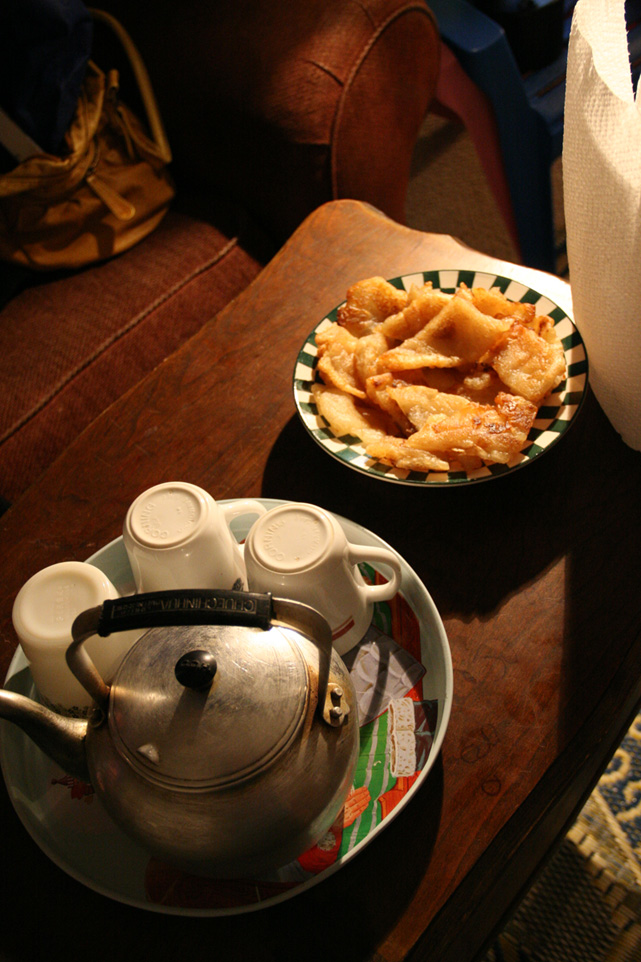This January, my friend Miriam and I had the opportunity to work with an ethnic group, the Karen (kuh-ren), through a class we were taking. Through some connections we got set up to do a photojournalistic project, which the main goal of was to document, through photos and interviews, how different their lives are here compared to where they are from, Burma and Thailand.
We heard a lot of stories – most just left us speechless because of the danger that every single one of these people have been through. To make a long story short, the Karen are their own people with their own culture, but without an independent state. Their roots are in Burma, but in the last 60 years they have been so violently persecuted by the Burmese police and citizens that they are all desperately fleeing to the eastern border and into Thailand. Once they get there, they are safe – as long as they stay in one of the few over-crowded refugee camps reserved for them. If they go out of the camp, there is high danger of being caught by Thai police and being sent back to Burma.
In order to come to the U.S., they have to obtain some sort of passport, something we kept hearing called a "U.N. picture." It can take years for a whole family to get theirs, because the U.N. only sends in officials to take pictures every so often. Once they have them, the next goal is to come here – to a new life, a safe life. They have to work on overcoming barriers here too (mainly learning English, because there is no way of learning it before they come) but no hardship here can compare to what they've already gone through.
Our class and project only lasted three weeks, and by the end we felt like we were barely getting started. We learned so much, and it opened our eyes to how much we truly don't know about the world.
The majority of the Karen in Asia are Buddhist, most of them that have fled to the U.S. are of the small Christian percentage of Karen. This is a church in St. Paul that we attended with the group that we worked with. In the center of the aisle is their passionate pastor, Phonh.
Karen children and teenagers often have tutors. They come to the U.S. with their families and are put into school, but instead of being placed according to their education level, they are placed according to age. We talked to a few high-schoolers who had, if anything at all, nothing more than an elementary education in Thailand. With the added language barrier, learning at such an accelerated level is truly a challenge.
Map of Burma (Myanmar) and Thailand
St. Paul is home to 4,000 Karen, the largest concentration of Karen in the U.S.
This lovely woman, Rutha, was a great help to us during our project and was one of our main contacts, and she let us interview her as well. She and her family have been here for 4 years. We asked her one day to bring some traditional Karen clothing and items for us to photograph...
The Karen flag
A group of Karen attending an ESL class
At ESL class – to our surprise, along with simple word study and repetition, they also did children's action songs to work on their comprehension... here they're doing the chicken dance with one of their teachers, Jeanette. :)
workbooks and dictionary
a wall of pictures featuring many of the children
For the first time (at least with this group), a meeting was organized to get some of the Karen families together. Its purpose was simply to connect, to find people with cars, and to generally fill each other's needs as a community and find ways to share resources.
entertainment to start the evening off right :)
during the meeting, all the children played in the adjacent gym...
Bonnie (speaking) was our main contact and connection to this group of Karen. She has been working with them and the church for several years and is very dedicated to helping them in their new lives here. Rutha (from earlier), her right-hand woman, is 2 seats to her left in the grey sweater.
my comrade Miriam in the background!
Bonnie and Rutha together – such a blessing these two are
For two of our several interviews, Rutha actually brought us to two families' homes. It was heartbreaking to see the conditions they were living in, but also inspiring that despite all the difficulties, they are still able to make good lives for themselves. Side note – it was so hot in both houses – I wonder if they were trying to compensate for the MN cold by bringing the heat up to Thailand temperatures ;)
twitter | flickr































